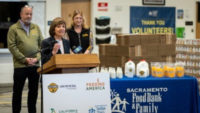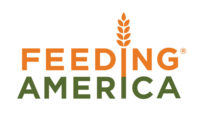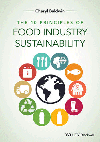Feeding the World
California Dairies’ Visalia plant is crucial to the co-op’s global push.

 The newest of its six plants in California’s San Joaquin Valley, California Dairies Inc.’s Visalia facility was built with expansion in mind – not only within, but into new foreign markets.
The newest of its six plants in California’s San Joaquin Valley, California Dairies Inc.’s Visalia facility was built with expansion in mind – not only within, but into new foreign markets.
Since it opened in early 2008, the plant has added a butter operation and a second powder line, with an eye toward export sales. “The new dryer and evaporator were designed to meet world specifications,” says David Bush, senior vice president of operations. “A big part of our business is export, not only on the powder side but on the butter side.”
In fact, the massive facility still has room to grow as global opportunities arise. “When the plant is running at full capacity, we’ll run about a million pounds of powder and 500,000 pounds of butter a day,” Bush says.
That seems like a tall order, considering how local this facility really is on the supply side. “Most of the milk comes from within a 50-mile radius of the plant,” Bush notes of the facility that’s adjacent to California Dairies’ corporate headquarters. “When the plant is fully operational, it will be running 200 loads a day.”

The plant receives milk around the clock, and it takes about 20 minutes to offload each tanker after their loads pass basic lab tests. “We’re prescreening for antibiotics here,” Bush says, noting that further testing is done by the larger lab inside. There’s storage available for up to 200 loads of milk, all from California Dairies members in Kings, Tulare, Kern and Fresno counties.
“We unload milk in six of eight bays; two are used for loadout,” says Hector Ochoa, plant manager. The plant ships out cream, condensed skim and, on occasion, buttermilk to customers and sister plants.
“We have four butter operations, so we’re balancing cream all the time between locations,” Bush explains.
 Each raw silo holds 70,000 gallons of milk, which doesn’t stick around long before it’s processed. “Silos get rotated out every 24 hours or so,” Ochoa says.
Each raw silo holds 70,000 gallons of milk, which doesn’t stick around long before it’s processed. “Silos get rotated out every 24 hours or so,” Ochoa says.
Before pasteurization, milk passes through three warm-bowl separators to produce skim milk that feeds the first evaporator and dryer. Six cold-bowl separators feed skim milk to the new second phase. The new expansion employs cold-bowl separators, which separate raw milk at 50 degrees, compared to conventional warm-bowl separators that operate at 130 degrees.
 Ochoa explains that while cold-bowl separators are less efficient than conventional ones, requiring more units, they yield a better end product. “We’re looking at better quality,” he says. “If you run it cold, you don’t give bacteria a chance to develop.” Six cold-bowl separators and three warm-bowl separators are run to meet demand; the others are back-up spares.
Ochoa explains that while cold-bowl separators are less efficient than conventional ones, requiring more units, they yield a better end product. “We’re looking at better quality,” he says. “If you run it cold, you don’t give bacteria a chance to develop.” Six cold-bowl separators and three warm-bowl separators are run to meet demand; the others are back-up spares.
Separation marks the junction between the plant’s two operations. Skim milk heads to the evaporators and dryers for processing into powder, while cream is shunted to the butter operation.
The evaporators and dryers are separated by the control room. “Typically we have two operators here, monitoring temperature, product density and moisture, and doing tests to make sure all the controls are working properly,” Ochoa says.
 Initial evaporation takes the milk up to 50% solids; by the time the powder gets to the end of the dryer, the moisture is down to about 4%. The final product is stored in one of eight 170,000-pound powder silos. “Each dryer produces about 21,500 pounds of powder per hour and has its own set of four silos,” Bush explains, noting that each quartet holds about 24 hours’ worth of production.
Initial evaporation takes the milk up to 50% solids; by the time the powder gets to the end of the dryer, the moisture is down to about 4%. The final product is stored in one of eight 170,000-pound powder silos. “Each dryer produces about 21,500 pounds of powder per hour and has its own set of four silos,” Bush explains, noting that each quartet holds about 24 hours’ worth of production.
A pneumatic blower conveys powder to the packaging lines, which are contained in a higher-hygiene area, representative of the plant’s zoned sanitation practices. “We’ve established different hygiene areas,” Bush says. “As you get closer to the dry powder areas, hygiene goes up.”
Each of the two powder bagging lines can fill about eight 25-kilogram bags a minute. “This room is state of the art – the latest technology in packaging,” Bush says. “The bag feeder has a camera to orient the empty bags onto a conveyor that feeds them to the filler.”
In an adjacent room, another line fills 1-ton cloth totes at about eight per hour. “If we have any down time on the bag lines, it piles up pretty quick,” Ochoa says.
Bagged powder finally winds up in the hands of two palletizing robots, which are programmed to stack them nine layers high, 45 bags per pallet, in a staggered pattern that Ochoa says “keeps them nice and balanced.”
 The palletizers handle 16 bags a minute, which Bush says is more than one truckload of powder every hour. Bags await shipment in the plant’s 100,000-square-foot dry storage area that can hold 20 million pounds of powder divided between two rooms. Ochoa says the plant typically has a 30-day inventory on hand, depending on market conditions.
The palletizers handle 16 bags a minute, which Bush says is more than one truckload of powder every hour. Bags await shipment in the plant’s 100,000-square-foot dry storage area that can hold 20 million pounds of powder divided between two rooms. Ochoa says the plant typically has a 30-day inventory on hand, depending on market conditions.
Powder has a shelf life of about a year, Bush says. “It doesn’t really go bad, but most companies require one year,” he notes.
Meanwhile, the heart of the butter operation (which was between runs during DFR’s visit) is a churn that can turn 50,000 pounds of cream into 25,000 pounds of butter every hour. The churn is linked to an automated 25-kilogram packaging system as well as other machines that package retail cuts for California Dairies’ Challenge butter brand.
“It won’t be long before this excess room is filled,” Bush says, noting the open areas in the butter room. “We’ve got new machinery coming in to expand our product lines.”

Swabbing for listeria, salmonella and other contaminants are conducted throughout the plant. The main lab performs in-process testing on powder and butter being produced as well as cream and condensed skim, and calibrates food analyzers.
“We have an off-site lab that does most of our testing,” Bush says, explaining the facility in nearby Tulare is shared with other members of the Dairy America powder consortium. “Our six plants can send samples to one off-site location and have them tested quickly and efficiently.”
A USDA grader was conducting tests on finished butter during DFR’s visit. “We have a resident grader,” Bush says, noting the company has a grade-label program for its cut butter.
“We have federal, state and local inspections at all facilities. We also hire third-party auditors like AIB and others. On top of that, we have customer audits. This plant supplies Mars [the candy manufacturer], which is one of the most strict on food safety and quality,” Bush says. “We have a host of internal audits to keep us ready for inspection day in and day out. Product is tested in-process on a daily basis.”
Employee safety is the charge of three safety managers who oversee training and enforce safety regulations at California Dairies’ six plants. Annual reviews hold each plant’s management responsible for the year’s safety performance.
“We have a pretty comprehensive incentive program, including monthly drawings for working safely and a drawing for a trip to Hawaii at the end of the year,” Bush says. “The outcome of all this is a very good safety record.”
Going further, the outcome of all the planning and execution of the new plant in Visalia should be continued success by California Dairies to serve its domestic customers and cultivate its growing export business.
Location: Visalia, Calif.
History: Opened in February 2008; butter room opened April 2008; second evaporator commissioned November 2009.
Size: 400,000 square feet
Number of employees: 70
Products made: Butter, nonfat dry milk powder, buttermilk powder.
Total processing capacity: 10 million pounds of milk daily.
Pasteurization: HTST, two @ 40,000 pounds cream per hour; 12 separators: eight cold-bowl separators @ 51,000 pounds per hour each, four warm-bowl separators @ 137,000 pounds per hour each.
Lines: Two powder bagging lines (25 kilograms), one 1-ton powder tote line, two 25-kilogram bulk butter packers, two cut-and-wrap butter packaging lines.
Storage capacity: 17 raw milk silos @ 70,000 gallons (600,000 pounds); eight 40,000-gallon cream silos; eight powder silos @ 170,000 pounds; dry storage, 20 million pounds (100,000 square feet); butter storage, 6 million pounds.
Extras
The following companies are among California Dairies’ key suppliers:
Advanced Process Technologies
E.A. Bonelli
Harris Construction Inc.
Kline Process Systems
Tetra Pak Inc.
Tetra Pak Cheese and Powder Systems Inc.


Since it opened in early 2008, the plant has added a butter operation and a second powder line, with an eye toward export sales. “The new dryer and evaporator were designed to meet world specifications,” says David Bush, senior vice president of operations. “A big part of our business is export, not only on the powder side but on the butter side.”
In fact, the massive facility still has room to grow as global opportunities arise. “When the plant is running at full capacity, we’ll run about a million pounds of powder and 500,000 pounds of butter a day,” Bush says.
That seems like a tall order, considering how local this facility really is on the supply side. “Most of the milk comes from within a 50-mile radius of the plant,” Bush notes of the facility that’s adjacent to California Dairies’ corporate headquarters. “When the plant is fully operational, it will be running 200 loads a day.”

Butter and powder
The process begins at the Visalia plant’s outdoor receiving area, which features eight semi-enclosed bays. The mild climate of the lower valley – with temperatures in the upper 60s during DFR’s early December visit – makes open-air offloading commonplace among dairy plants in these parts. “You don’t have to contend with ice and snow here,” Bush remarks.The plant receives milk around the clock, and it takes about 20 minutes to offload each tanker after their loads pass basic lab tests. “We’re prescreening for antibiotics here,” Bush says, noting that further testing is done by the larger lab inside. There’s storage available for up to 200 loads of milk, all from California Dairies members in Kings, Tulare, Kern and Fresno counties.
“We unload milk in six of eight bays; two are used for loadout,” says Hector Ochoa, plant manager. The plant ships out cream, condensed skim and, on occasion, buttermilk to customers and sister plants.
“We have four butter operations, so we’re balancing cream all the time between locations,” Bush explains.

Before pasteurization, milk passes through three warm-bowl separators to produce skim milk that feeds the first evaporator and dryer. Six cold-bowl separators feed skim milk to the new second phase. The new expansion employs cold-bowl separators, which separate raw milk at 50 degrees, compared to conventional warm-bowl separators that operate at 130 degrees.

Separation marks the junction between the plant’s two operations. Skim milk heads to the evaporators and dryers for processing into powder, while cream is shunted to the butter operation.
The evaporators and dryers are separated by the control room. “Typically we have two operators here, monitoring temperature, product density and moisture, and doing tests to make sure all the controls are working properly,” Ochoa says.

A pneumatic blower conveys powder to the packaging lines, which are contained in a higher-hygiene area, representative of the plant’s zoned sanitation practices. “We’ve established different hygiene areas,” Bush says. “As you get closer to the dry powder areas, hygiene goes up.”
Each of the two powder bagging lines can fill about eight 25-kilogram bags a minute. “This room is state of the art – the latest technology in packaging,” Bush says. “The bag feeder has a camera to orient the empty bags onto a conveyor that feeds them to the filler.”
In an adjacent room, another line fills 1-ton cloth totes at about eight per hour. “If we have any down time on the bag lines, it piles up pretty quick,” Ochoa says.
Bagged powder finally winds up in the hands of two palletizing robots, which are programmed to stack them nine layers high, 45 bags per pallet, in a staggered pattern that Ochoa says “keeps them nice and balanced.”

Powder has a shelf life of about a year, Bush says. “It doesn’t really go bad, but most companies require one year,” he notes.
Meanwhile, the heart of the butter operation (which was between runs during DFR’s visit) is a churn that can turn 50,000 pounds of cream into 25,000 pounds of butter every hour. The churn is linked to an automated 25-kilogram packaging system as well as other machines that package retail cuts for California Dairies’ Challenge butter brand.
“It won’t be long before this excess room is filled,” Bush says, noting the open areas in the butter room. “We’ve got new machinery coming in to expand our product lines.”

Clean as a whistle
It’s apparent that food safety and quality are of utmost importance at the Visalia plant just by the looks of the spotless surroundings. Scrupulously clean wide corridors connect the operations areas of the plant, adding an extra layer of protection against cross-contamination. The plant also features a high-tech wastewater treatment facility, a nod to the Golden State’s stringent environmental regulations. “That’s one of the innovations at this plant, to make sure all water going back to the city is clean as possible,” Bush says.Swabbing for listeria, salmonella and other contaminants are conducted throughout the plant. The main lab performs in-process testing on powder and butter being produced as well as cream and condensed skim, and calibrates food analyzers.
“We have an off-site lab that does most of our testing,” Bush says, explaining the facility in nearby Tulare is shared with other members of the Dairy America powder consortium. “Our six plants can send samples to one off-site location and have them tested quickly and efficiently.”
A USDA grader was conducting tests on finished butter during DFR’s visit. “We have a resident grader,” Bush says, noting the company has a grade-label program for its cut butter.
“We have federal, state and local inspections at all facilities. We also hire third-party auditors like AIB and others. On top of that, we have customer audits. This plant supplies Mars [the candy manufacturer], which is one of the most strict on food safety and quality,” Bush says. “We have a host of internal audits to keep us ready for inspection day in and day out. Product is tested in-process on a daily basis.”
Employee safety is the charge of three safety managers who oversee training and enforce safety regulations at California Dairies’ six plants. Annual reviews hold each plant’s management responsible for the year’s safety performance.
“We have a pretty comprehensive incentive program, including monthly drawings for working safely and a drawing for a trip to Hawaii at the end of the year,” Bush says. “The outcome of all this is a very good safety record.”
Going further, the outcome of all the planning and execution of the new plant in Visalia should be continued success by California Dairies to serve its domestic customers and cultivate its growing export business.
At A Glance
California Dairies Inc.Location: Visalia, Calif.
History: Opened in February 2008; butter room opened April 2008; second evaporator commissioned November 2009.
Size: 400,000 square feet
Number of employees: 70
Products made: Butter, nonfat dry milk powder, buttermilk powder.
Total processing capacity: 10 million pounds of milk daily.
Pasteurization: HTST, two @ 40,000 pounds cream per hour; 12 separators: eight cold-bowl separators @ 51,000 pounds per hour each, four warm-bowl separators @ 137,000 pounds per hour each.
Lines: Two powder bagging lines (25 kilograms), one 1-ton powder tote line, two 25-kilogram bulk butter packers, two cut-and-wrap butter packaging lines.
Storage capacity: 17 raw milk silos @ 70,000 gallons (600,000 pounds); eight 40,000-gallon cream silos; eight powder silos @ 170,000 pounds; dry storage, 20 million pounds (100,000 square feet); butter storage, 6 million pounds.
Extras
The following companies are among California Dairies’ key suppliers:
Advanced Process Technologies
E.A. Bonelli
Harris Construction Inc.
Kline Process Systems
Tetra Pak Inc.
Tetra Pak Cheese and Powder Systems Inc.
Looking for a reprint of this article?
From high-res PDFs to custom plaques, order your copy today!








